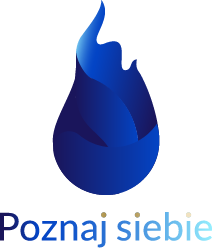If it’s built for only one OS, it might deliver an inferior user experience as compared to other native apps. Cross-platform mobile app development enables developers to write and share code for building apps across multiple hardware platforms and is compatible with Windows, Linux, and MacOS. React Native’s ability to reuse code significantly reduces development costs. This is because 90% of the framework can be implemented using a single piece of code. As a result, React Native developers can avoid spending a lot of time and money developing separate mobile applications for each platform, such as Android and iOS. While the primary focus of React Native is on building mobile applications (iOS and Android), it can be adapted for web development using libraries like React Native for Web.
What’s Your Take on Flutter vs. React Native?
One of the main advantages of using cross-platform apps is that they can be used on more operating systems. For example, apps that run on Windows, Android, and IOS can often be made to run on other systems as well, as long as the developer updates their app. React Native is a cross-platform framework, yet the term „native” is attached to it, which can sometimes be confusing for readers. So, let’s first understand what „native” means in this context before exploring other aspects of React Native. As you saw earlier in this article, React Native has tens of top tech players in its team – from Facebook, Instagram, and https://wizardsdev.com/en/vacancy/senior-product-manager-leader-ai-product/ Walmart to SoundCloud and Skype. As a Google-bred framework, it powers not just many Google services (like Google Ads), but also the Asian tech giant, Alibaba.
- In 2015, Facebook originally made React Native available as an open-source project.
- To establish themselves as the leading retailer, Walmart rewrote their mobile app in React Native, which was earlier in Node.js.
- It is used to create cross-platform applications with the help of reusable components.
- It helps its users deal with daily stress through meditation, inspiring articles, and more.
- It offers an array of pre-built components and APIs that can be seamlessly integrated to fashion user interfaces that closely resemble native apps.
- The New Architecture also introduces Fabric, a reimagined rendering system.
Are AI Developers in Demand? Explore the Growing Need for AI Talent in Business
Programmers write code in Microsoft C# and can release an app for various platforms with up to 90% of the codebase shared between Android, iOS, and Windows. Xamarin is mainly used by Windows developers, as Linux and Mac developers tend to shy away from .NET technologies. Comparing React Native and Xamarin, Xamarin performs similarly to React Native and is a great platform; it is less popular and has a much smaller developer community than React Native.
Perl vs Python: Choosing the Right Scripting Language
Considering long-term maintenance is crucial when choosing a tech stack. Ongoing maintenance costs, including bug fixes and updates, are essential after the app’s launch. React Native’s need for frequent updates, both when the platform is updated and when new components are added, can be a potential drawback compared to native technologies. Aligning the tech stack with project requirements is vital for successful app development. Businesses need to assess whether React Native is the best fit for their specific needs.
Examples of Apps Built with React Native
It efficiently supports frame rates of up to 60 frames per second, ensuring a smooth and responsive user experience. Key features like GPU utilization and a responsive dynamic interface significantly enhance app performance. Creating separate codebases for iOS and Android increases development time and cost. Each platform involves expertise in its specific languages and frameworks. React Native for iOS and Android development assists in providing high performance.
Strengths and Weaknesses of React Native
Whether it’s working out business strategies, planning marketing, or finding investors, React Native is a popular choice for startups and established companies. React Native developers need to articulate ideas, discuss solutions, and provide updates to team members and stakeholders. React Native developers need to analyze problems, break them down into smaller components, and devise efficient solutions. Selecting appropriate third-party libraries minimizes bloat and potential performance issues. Thoroughly evaluating libraries based on functionality, maintainability, and compatibility helps in choosing lightweight and well-maintained options that align with project requirements.
The C++ engine which Flutter runs on performs well and might give Flutter a slight advantage over React Native, which uses UI components compiled to their native equivalents. Additionally, it has the JavaScript layer, which makes it a bit slower than Flutter. React Native and Flutter React Native Mobile developer job – two cross-platform frameworks developed by well-known tech giants; Facebook and Google. Both are on the list of the most loved frameworks, with Flutter being more favored by developers than React Native. Iconic is built on top of Angular, and therefore if you’re familiar with it, it’ll be easy for you to pick up Iconic. It’s packed with numerous built-in-components, which speed up development, making it smoother and easier.
It provides a rich library that helps developers create components and UI elements easily. Plus, it provides access to other libraries that make building complete UIs peaceful. React Native is a great solution Web development for creating apps that will work smoothly irrespective of the platform or system they run on. It allows you to save a lot of work hours, resulting in a faster development process, and it is also cost-efficient.
